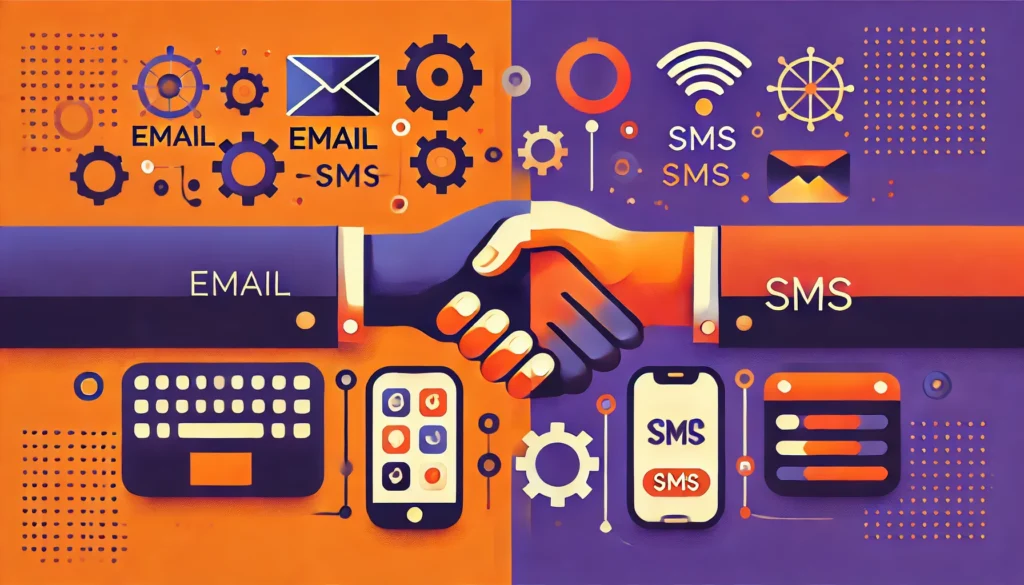Omnichannel vs. Multichannel: Which one is the Best Approach for Consumers
Product
As consumers, we've all faced the annoyance of disjointed experiences. Whether it's receiving mixed messages from the same brand or having to repeat ourselves across different platforms, these issues can turn any shopping or service interaction into a chore. We understand the pain, the confusion, and the desire for a smoother journey. We've been there too.
What is Multichannel Communication?
In the multichannel world, imagine you’re a juggler. Each ball represents a different channel: one for email, another for social media, a third for in-store experiences, and so on. Each ball is distinct and operates independently. This approach lets businesses reach you on multiple platforms, maximizing their presence. However, like juggling, keeping these balls in the air can be tricky, and the risk of dropping one increases with each additional ball.
What is Omnichannel Communication?
Now, envision a symphony. Each instrument plays a different part, but together, they create a harmonious experience. This is omnichannel communication. It integrates various channels to provide a unified, seamless experience, regardless of how or where you engage with a brand. Whether you start your journey on a mobile app, continue on a website, and finish in a physical store, the transition is smooth, and everyone is in tune with your needs.
Key Differences Between Omnichannel and Multichannel Communication
The main difference lies in integration and customer experience. Multichannel casts a wide net, reaching out across various platforms without necessarily connecting them. It’s about being everywhere at once. Omnichannel, however, is about creating a cohesive experience, ensuring that all channels are singing from the same hymn sheet.
Imagine buying a new gadget online and having questions about setting it up. With multichannel, you might visit the store, call the hotline, and check the website, receiving different answers from each. With omnichannel, no matter where you turn, you get consistent, helpful guidance, as if everyone involved had a meeting about your specific issue before you even asked.
Pros and Cons of Multichannel Communication
Advantages: Initial Cost Savings and Broad Reach
Multichannel communication offers cost savings upfront, allowing companies to establish a presence across multiple platforms without heavy initial investment. This broad reach ensures that consumers encounter the brand across various channels, both online and offline. However, it’s important to note that while multichannel approaches provide immediate accessibility, they may lack scalability as the business grows. Transitioning to a more integrated system later on can disrupt the cohesive customer experience, highlighting the need for careful consideration of long-term strategies.
Disadvantages: Siloed Channels and Inconsistent Customer Experience
The flip side is the lack of coordination. Each channel operates in its own bubble, creating a disjointed experience. Imagine trying to piece together a puzzle where each piece comes from a different box. You might end up with a complete picture eventually, but the journey there can be confusing and less than satisfying.
Pros and Cons of Omnichannel Communication
Advantages: Unified Customer Experience and Higher Engagement
Omnichannel is all about creating a seamless journey. For consumers, this unified approach means interactions with a brand feel personalized and cohesive, no matter the platform. It’s akin to your favorite TV series; whether you watch it on live TV, streaming, or through a box set, the story remains constant, and you never lose your place.
Disadvantages: Complexity in Implementation and Higher Initial Investment
The challenge for businesses, and indirectly for consumers, is the complexity and cost of setting up an omnichannel strategy. Integrating all channels to work together harmoniously requires significant upfront investment and sophisticated data management. However, for you, the consumer, this investment means a better, more tailored experience in the long run.
Which is Best for Consumers?
Tailoring the Approach to Consumer Needs
The decision between omnichannel and multichannel isn’t black and white. It depends on what you, as a consumer, value most. If you prefer a wide variety of touchpoints and don’t mind a bit of inconsistency, multichannel might serve you well. But if a seamless, personalized experience is what you’re after, omnichannel is the way to go.
Consumer Behavior Influences
Your behavior and preferences play a crucial role. If you’re someone who sticks to one or two channels for shopping and communication, multichannel’s broad reach might not matter much to you. On the other hand, if you’re using multiple platforms and seek a cohesive experience across all of them, omnichannel’s integrated approach will likely resonate more.
How to Decide Between Omnichannel and Multichannel for Your Needs
Factors to Consider
- Business Size and Scope: Small businesses might start with a multichannel approach due to its lower initial investment, gradually integrating channels into an omnichannel strategy as they grow.
- Target Audience: Know where your customers are. If they predominantly use one or two channels, a multichannel strategy might suffice. However, if they’re spread out across many platforms, consider the benefits of omnichannel.
Available Resources: Implementing an omnichannel strategy requires more resources and technology. Assess what’s feasible for your situation.



